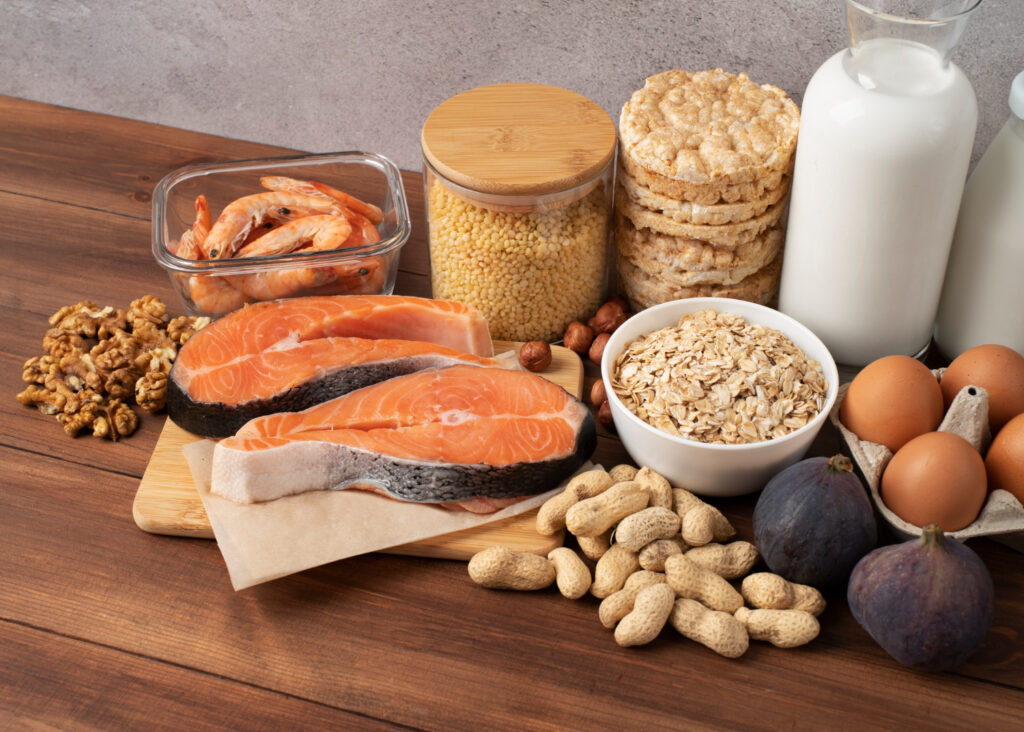If you are dealing with hypertension, you can effectively reduce your blood pressure by making certain lifestyle changes that revolve around your diet, exercise routine, and stress management. Blood pressure is a measure of the force exerted by your heart as it pumps blood throughout your body.
If your blood pressure is elevated, it means that your heart is exerting extra effort to pump blood, thereby increasing your risk of heart disease and stroke. Hypertension, commonly referred to as high blood pressure, affects nearly half of the adult population in the United States.
Here are a few strategies that can effectively reduce blood pressure, complementing the use of prescribed medication and regular monitoring with a blood pressure device.
1. Increase Your Physical Activity

Regular exercise strengthens your heart, preventing it from straining while pumping blood throughout your body, ultimately leading to a reduction in blood pressure. Moreover, numerous studies have demonstrated that individuals who engage in cardio and resistance training programs can effectively lower their elevated blood pressure levels.
To ensure optimal heart health, the American College of Cardiology and the American Heart Association (AHA) recommend engaging in 150 minutes of moderate-intensity exercise, such as brisk walking, or 75 minutes of vigorous-intensity exercise, such as heavy lifting or running, per week.
2. Reduce the Sodium in Your Food
Consuming excessive amounts of sodium can lead to fluid retention, resulting in an increase in blood pressure. It is recommended to limit sodium intake to no more than 2,300 milligrams per day, while ensuring a minimum of 1,500 milligrams to maintain healthy blood pressure levels.
The most common dietary source of sodium is table salt. A single teaspoon of salt contains approximately 2,300 milligrams of sodium.
Checking nutrition labels can be a valuable practice in steering clear of excessive salt intake that may unknowingly find its way into your diet. Processed foods, such as deli meat, chips, and canned soup, tend to be notorious for their elevated sodium content.
Foods that are classified as low in sodium have 5% or less of the daily value (DV), whereas foods containing 20% or more are considered high in sodium. It is important to note that not everyone will experience high blood pressure as a result of consuming a high-sodium diet.
Some people exhibit a higher sensitivity towards sodium intake. Conversely, those who are less sensitive to sodium can typically eliminate any excess sodium through urination, thereby avoiding fluid retention or the onset of high blood pressure.
3. Increase Your Potassium Intake
You can also reduce your blood pressure by increasing your potassium intake. This essential mineral aids in the relaxation of blood vessels and facilitates the faster elimination of sodium from your body. Whether you have high blood pressure or not, it is recommended that adults consume 2,600-3,400 milligrams (mg) of potassium on a daily basis.
Foods that are abundant in potassium include:
1. Dried apricots
2. Cooked lentils
3. Cooked acorn squash
4. Medium-sized baked potato
5. Canned kidney beans
6. Medium-sized banana
7. Raw spinach
Your healthcare provider may also recommend following the Dietary Approaches to Stop Hypertension (DASH) diet as a means to reduce blood pressure. This diet restricts sodium intake to 1,500 mg per day while emphasizing the consumption of whole foods such as fruits, vegetables, and lean meats and dairy products, which are rich in potassium, aiming for a daily intake of 4,700 mg.
4. Reduce Sugar and Carbohydrates
Reducing sugar and refined carbohydrates, which are stripped of fiber, minerals, and vitamins, can effectively contribute to lowering blood pressure over time. Surprisingly, a comprehensive review conducted in 2014 revealed that diets rich in sugar have a greater impact on blood pressure elevation compared to salt intake.
Furthermore, a recent study conducted in 2020 demonstrated that individuals who were overweight or obese managed to significantly reduce their blood pressure levels by adhering to low-carb and low-fat diets for a duration of six months.
Low-carb diets restrict the intake of carbohydrates to a maximum of 130 grams (g) per day, encompassing starchy vegetables, high-sugar fruits, bread, pasta, and sugary foods. Furthermore, the American Heart Association (AHA) advises men to limit their sugar consumption to 9 teaspoons (36 g) and women to 6 teaspoons (25 g) on a daily basis. To put this into perspective, a 12-ounce soda contains approximately 8 teaspoons (32 g) of added sugar.
5. Reduce Stress
Stress is closely associated with high blood pressure. Nevertheless, extensive research indicates that engaging in stress-reducing activities, such as practicing yoga and meditation, can potentially assist individuals in reducing their blood pressure levels.
A review conducted in 2013 revealed that individuals who practiced yoga experienced a greater reduction in both diastolic and systolic blood pressure compared to those who did not engage in any form of exercise. It is worth noting that the yoga interventions in this study encompassed various elements such as breathing control, yoga postures, and meditation techniques.
A different review conducted in 2012 discovered that both transcendental meditation and mindfulness-based stress reduction have shown some effectiveness in reducing systolic and diastolic blood pressure levels. This effect was observed in individuals who were both taking and not taking medication for their blood pressure.
6. Make Enough Time for Sleep

While you snooze, your body naturally lowers blood pressure. Thus, if you don’t get enough sleep, your blood pressure will stay elevated for extended periods of time.
Therefore, individuals who suffer from insomnia and sleep deprivation, particularly those aged 45 years or older, are at a higher risk of developing high blood pressure. A research article published in 2016 further supports this claim, revealing compelling evidence that individuals who consistently sleep less than seven hours per night are more prone to experiencing high blood pressure.
Over time, insufficient sleep can lead to an increase in blood pressure. Therefore, it is crucial to prioritize getting a minimum of seven hours of sleep each night, as it can contribute to lowering your blood pressure.
You Can Also Read: Nuts for Health: Transform Your Health with the Top 7 Healthiest Nuts
7. Eat Plenty of Protein

A diet that is abundant in protein and fiber has been shown to effectively reduce high blood pressure. A study conducted in 2014 discovered that individuals who consumed 100 grams of protein on a daily basis for almost 11 years had a 40% lower risk of developing high blood pressure compared to those who consumed low amounts of protein. Moreover, when high protein diets were combined with a high fiber intake, individuals were able to reduce their risk of high blood pressure by an impressive 59%.
To enhance your protein consumption, seek out foods that contain a minimum of 7 grams per ounce. Excellent sources of high-protein foods encompass fish, eggs, meat, beans, legumes, nuts, and dairy products such as cheese and Greek yogurt. Furthermore, studies have indicated that incorporating whey protein supplements into your diet may contribute to reducing systolic pressure.
8. Take Enough Omega-3s
Consuming a minimum of 3 grams of docosahexaenoic acid (DHA) and eicosapentaenoic acid (EPA) omega-3 fatty acids is believed to have a positive impact on reducing blood pressure. These particular types of polyunsaturated fats are crucial for maintaining a healthy body and promoting cardiovascular well-being.
A 2014 meta-analysis discovered that fish oil, which is an omega-3 supplement, effectively lowers both systolic and diastolic blood pressure levels in individuals with hypertension. This finding is further supported by the U.S. Food and Drug Administration, which endorses the consumption of omega-3 from both dietary sources and supplements as a means to reduce the risk of high blood pressure and coronary heart disease. Incorporating omega-3-rich foods such as salmon, tuna, flaxseed, and chia seeds into your diet can also contribute to improving your omega-3 levels.
9. Reduce Your Caffeine Intake
Caffeine has the potential to temporarily elevate your blood pressure, regardless of whether you have pre-existing hypertension. However, this effect does not pose a significant risk for the majority of individuals. In fact, certain studies suggest that caffeine might even contribute to reducing the likelihood of developing high blood pressure.
However, individuals with high blood pressure may encounter problems when consuming caffeine. A study revealed that those with hypertension experienced an elevation in their blood pressure levels and an increased risk of heart disease when consuming more than two cups of coffee daily.
While research on this topic remains limited, it is worth noting that even the American Heart Association (AHA) acknowledges the importance of individuals with high blood pressure restricting their caffeine intake. According to the AHA, it is advisable for such individuals to consume no more than a single 8-ounce cup of coffee or caffeinated tea per day.
